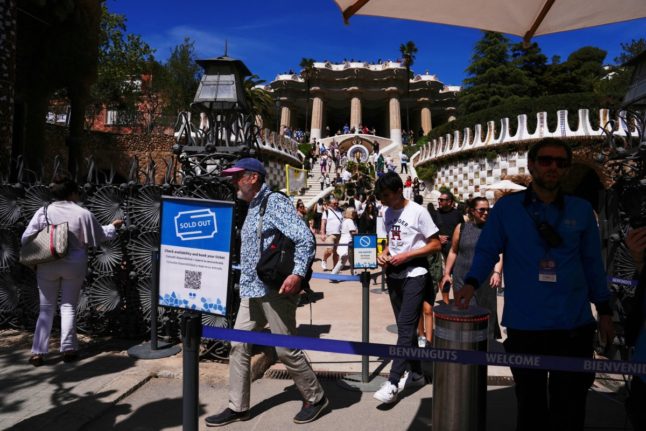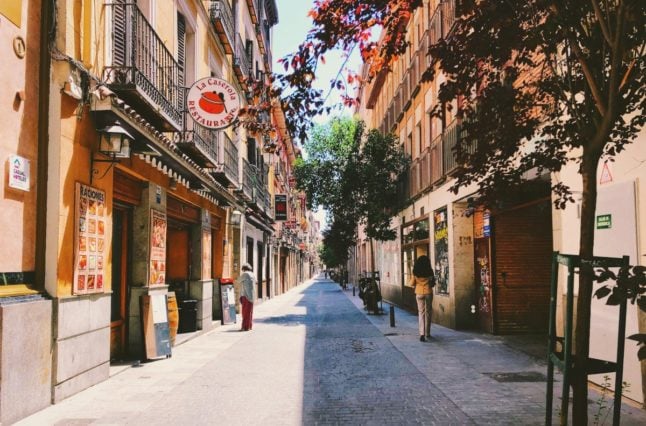Barcelona’s city council has deleted a busy bus route from Google Maps after years of complaints from locals about tourists dominating the service.
The 116 bus has been removed from the recommended routes feature on the app, a travel mainstay of tourists when visiting a new city. The hope is that by doing so, less tourists in the Catalan capital will be aware of it and there will be more seats available for locals who need the service to go about their daily lives.
The bus, which covers the Park Güell area of the city, was once a small, local neighbourhood service with capacity for around 20 passengers. But since it appeared on Google Maps as one of the main means of transport to Park Güell, one of Barcelona’s key tourist attractions, large groups of tourists began using it and the 116 service lost its main function, which is to take locals to areas of their neighbourhood with few transport connections.
READ ALSO: Why does hatred of tourists in Spain appear to be on the rise?
Neighbourhood organisations had been protesting for years. Initially the council increased the frequency of buses, to the point where it became the route with the most buses in circulation in the entire city, but even this did little to stop the wave of tourists using it. More buses passed by, but locals couldn’t find a seat (or even a space) on them.
Then the local council had the idea to stop tourists knowing about the route: remove it from Google Maps entirely. City Councillor Albert Batlle said back in February the council was looking for ways to “eliminate it from mapping tools and other internet references,” and free up space for locals.
Locals weren’t sure it would work. “At first we laughed… we thought it was absurd, like putting gates on a field,” Cesca Sánchez, from La Salut and Sanllehy Neighbourhood Association, told Spanish daily El Diario. But, she says, “the measure is being effective”.
Since the 116 disappeared from Google Maps, tourists no longer dominate the bus and the route serves locals again, she says.
It seems to have worked, and locals are happy. “It’s been disappearing from Google and changing radically,” says one bus driver familiar with the long-term “anger” of locals.
However, neighbours now fear that lines 24 and V19, which follow similar routes, will become overcrowded. But drivers on these routes, when consulted by El Diario, say that the numbers of tourists are more sustainable as they are buses on the conventional city-wide network, which have greater seats and capacity numbers.
This comes amid growing anti-tourist and more general anti-foreigner sentiment in Spain. With short-term tourist rentals pushing up prices and forcing many locals out of their neighbourhoods, different legislation restricting Airbnb-style rentals has already been introduced in recent years in numerous cities such as Valencia, Palma, Seville, Tarifa, Madrid, Barcelona, and San Sebastián, with varying degrees of success.
READ MORE: Where in Spain do locals ‘hate’ tourists?
Anti-tourist graffiti has popped up around the country, suggesting foreigners go home.
The story of the 116 bus route in Barcelona shows that it’s not just rental costs and access to housing that is affected by mass tourism — local infrastructure can also suffer and needs increasingly extreme measures to preserve it for locals.
READ ALSO:



 Please whitelist us to continue reading.
Please whitelist us to continue reading.
Member comments